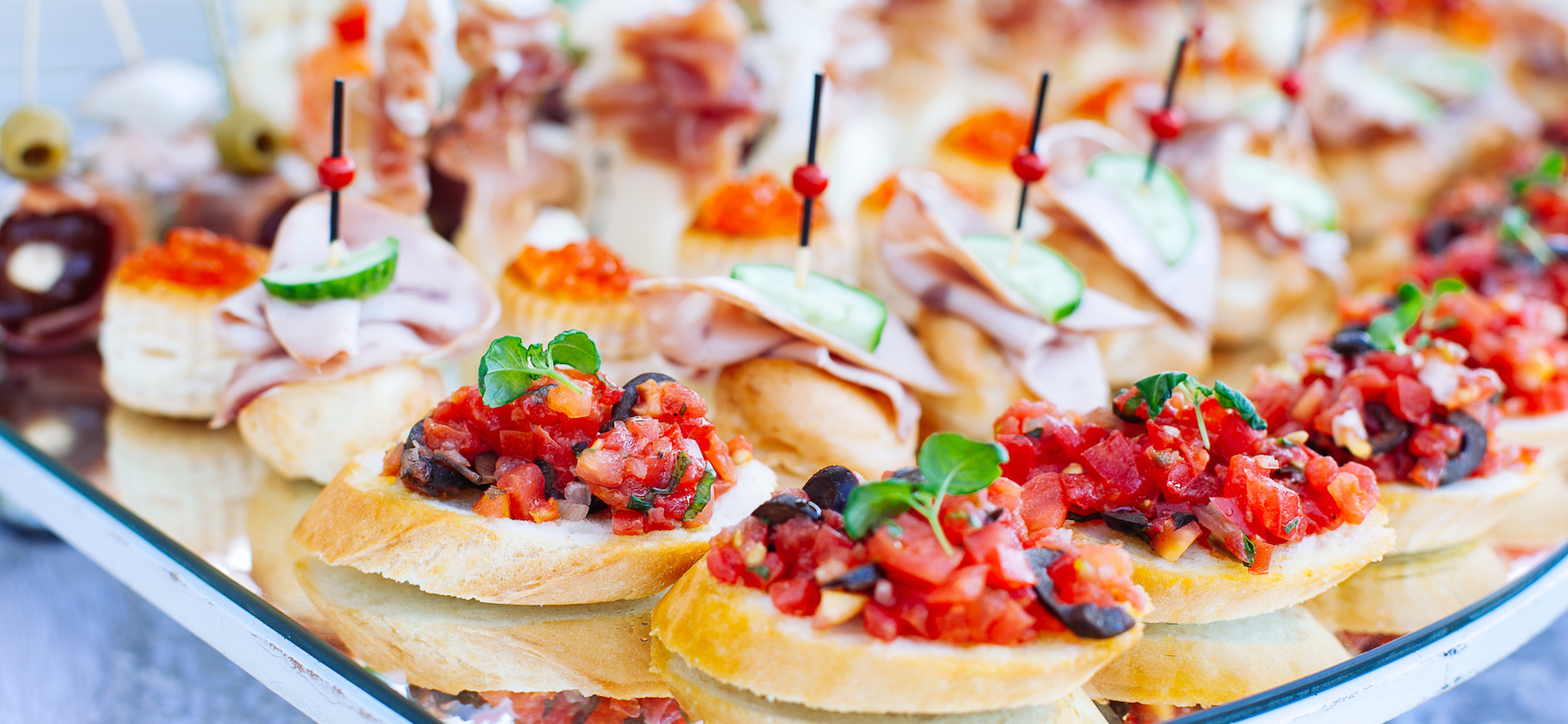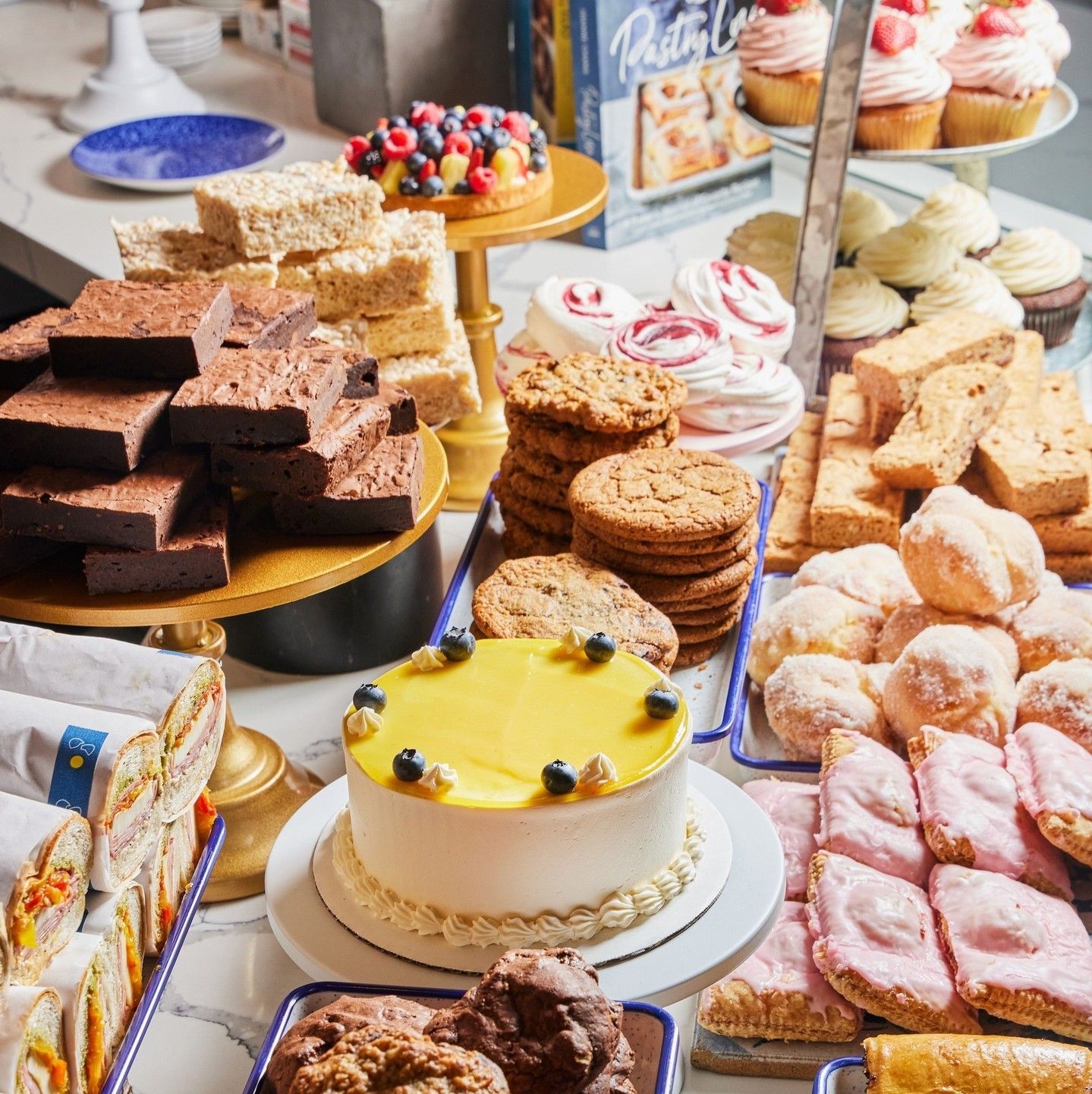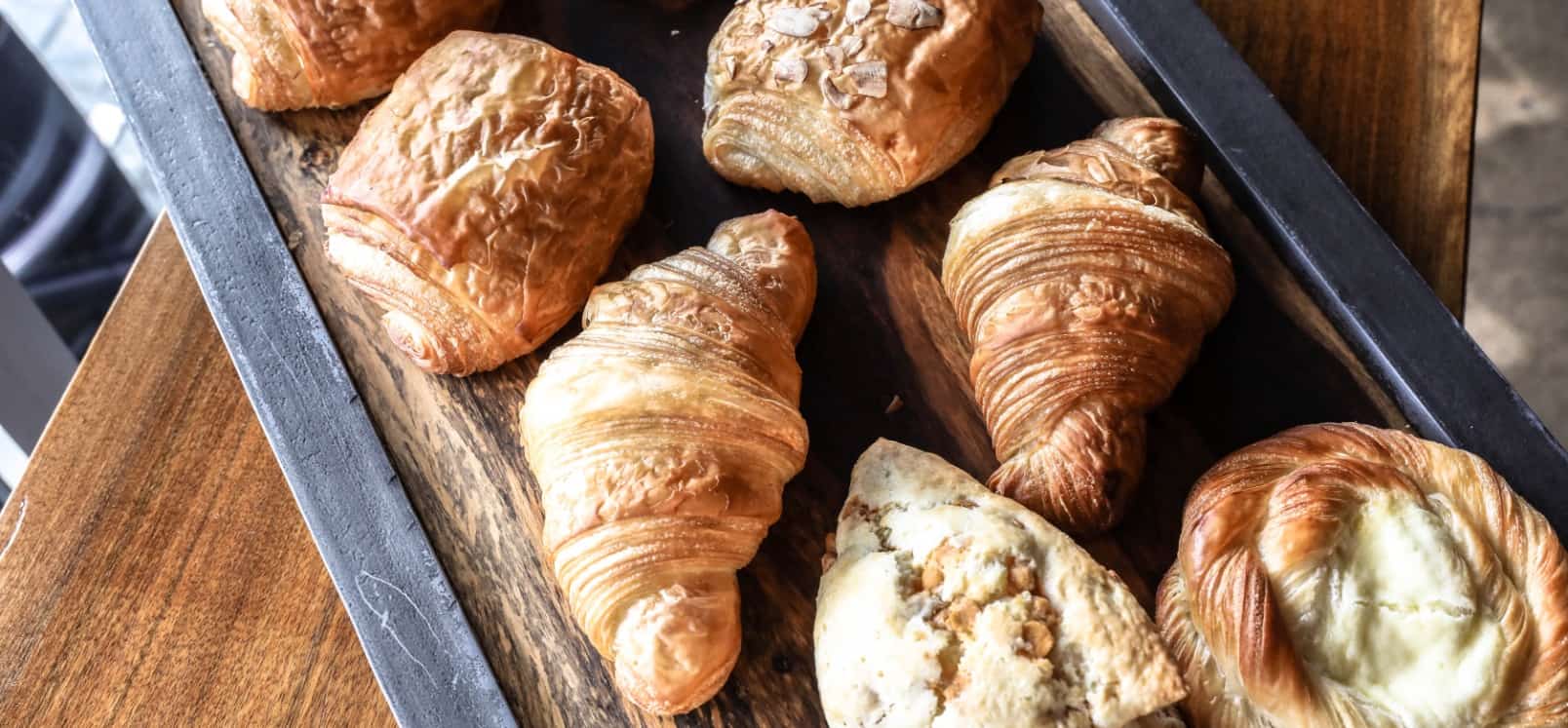Comprehending the Art of Pastry Shop Products: From Freshly Baked Breads to Alluring Pastries and Finger Foods
From the science behind the ideal loaf of bread, where fermentation and gluten advancement play critical functions, to the skill required for producing layered pastries, each aspect exposes an engaging story of craftsmanship. The convenience of finger foods illustrates how flavor and texture can be skillfully integrated to engage diverse taste preferences.
The Science of Bread Making
At the heart of every loaf of bread exists a remarkable interaction of chemistry and biology. The process of bread making starts with the combination of flour, water, yeast, and salt-- each active ingredient playing an essential role in the final item.
Yeast, a living organism, ferments the sugars present in the flour, producing co2 and alcohol at the same time. The carbon dioxide gas develops bubbles in the dough, creating it to rise and establish a light structure. The temperature level and humidity during fermentation dramatically affect yeast task and, subsequently, the bread's taste and texture.

Mastering Bread Techniques
Just how can one attain the fragile equilibrium of texture and taste that defines remarkable bread? Mastering bread techniques needs a deep understanding of components, approaches, and the scientific research behind them. Essential to this craft is the option of high-grade ingredients-- flour, butter, sugar, and eggs-- each playing a crucial duty in the final product's flavor and structure.
The technique of lamination, which entails folding layers of dough and butter, develops the wanted flakiness in pastries like croissants and puff bread. Precision in temperature level is vital, as butter must remain cold to guarantee ideal layers. Correct mixing methods, such as the creaming technique for cakes, make sure even unification of air and fat, resulting in a light and ventilated crumb.
In addition, maintaining the ideal moisture levels during cooking can substantially affect the result, ensuring that pastries climb correctly and attain that golden-brown surface. The art of pastry also demands patience and method; each attempt enhances one's ability and understanding of the detailed equilibrium needed to create tempting pastries that delight the senses. Mastery in these methods ultimately identifies a competent bread chef from an amateur.
Kinds Of Finger Foods
The globe of cooking thrills prolongs past pastries to encompass a broad array of finger foods, which are celebrated for their benefit and versatility. These bite-sized deals with are excellent for social celebrations, using a range of flavors and textures that accommodate diverse tastes.

On the sweeter side, mini tarts and bite-sized cupcakes use a fascinating coating to any type of dish, interesting those with a craving for sweets. Cheese and charcuterie boards offer as an innovative selection, enabling visitors to tailor their attacks with a variety of meats, cheeses, nuts, and fruits.
Taste Profiles in Baking
Baking is a detailed dance of taste profiles that integrates pleasant, mouthwatering, and umami notes to create a harmonious experience for the taste buds. Recognizing these profiles is essential for bakers looking for to boost their creations.
Sweetness commonly acts as the structure in baked items, with sugars, fruits, and natural sweeteners enhancing taste depth. Components such imp source as delicious chocolate and caramel introduce complex wonderful notes that can either dominate or enhance click this site other tastes. On the other hand, full-flavored elements, usually found in breads and pastries, give balance and comparison. Active ingredients like cheeses, seasonings, and natural herbs can change a simple dough right into a diverse taste experience.
Umami, regularly neglected in cooking, plays a significant function in enhancing flavors. Ingredients such as aged cheeses, fermented products, or even particular nuts add to a savory deepness that boosts overall taste.
Additionally, the interaction of acidity from active ingredients like buttermilk or citrus passion can lighten up tastes, offering a rejuvenating counterpoint to sweet taste. By attentively integrating these taste accounts, bakers can craft products that reverberate with varied tastes buds, developing an extraordinary culinary experience. Eventually, grasping taste profiles is key to innovation in the world of cooking.
Essential Cooking Equipments and Components
Understanding flavor accounts in cooking collections the stage for selecting the right tools and active ingredients that promote the creation of exceptional baked products. The foundation of effective cooking lies in having essential devices at your disposal. Secret things include mixing bowls, gauging mugs, and spoons for accuracy, along with a strong stand mixer or hand mixer for simple and easy blending. A reputable collection of baking pans-- such as sheet frying pans, loaf frying pans, and cake frying pans-- is essential for attaining wanted textures and forms.
Flour offers as the backbone of many dishes; picking the ideal type-- be it bread, bread, or all-purpose flour-- can drastically influence the end result. Baking powder and baking soda are crucial for creating lift in cakes and pastries.
In addition, integrating taste enhancers like vanilla essence, seasonings, and citrus zest can boost your productions. By making certain access to these essential tools and ingredients, bakers can confidently start their cooking journey, crafting a varied array of wonderful baked items.
Final Thought
Proficiency in bread production, bread prep work, and see finger food discussion discloses the detailed relationships between procedures and ingredients. Birthday Catering Maddington. Checking out diverse flavor profiles enriches the baking experience, while vital tools and ingredients offer the foundation for success.
How can one attain the delicate equilibrium of structure and flavor that specifies exceptional bread? Essential to this craft is the option of high-grade active ingredients-- flour, butter, sugar, and eggs-- each playing a vital function in the last product's taste and structure.

Comprehending flavor profiles in baking sets the stage for choosing the right devices and active ingredients that help with the development of phenomenal baked products. Checking out diverse taste accounts enriches the baking experience, while vital devices and active ingredients give the foundation for success.